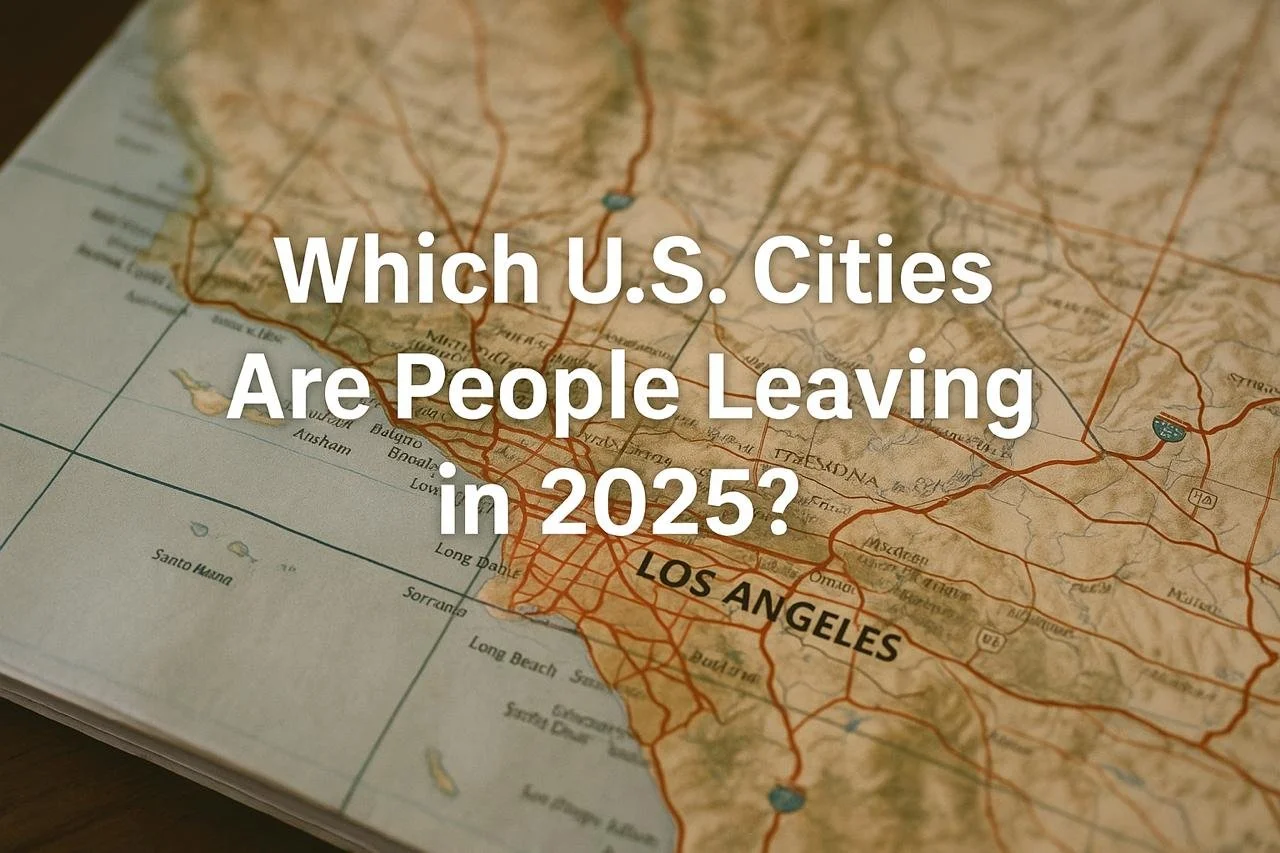Which U.S. Cities Are People Leaving in 2025?
By 2025, the American urban landscape is undergoing a major transformation, with several cities experiencing significant population declines. Understanding which cities are losing residents—and why—can offer valuable insight to individuals planning a move, companies considering expansion, and policymakers working to revitalize neighborhoods. This article explores the cities experiencing the steepest population drops in 2025, the reasons behind these shifts, and what it means for those seeking their next destination.
Trends in Population Decline for 2025
While the overall U.S. population continues to grow modestly, that growth is uneven. Recent data shows that nearly half of American cities have seen population decreases in recent years. These declines are especially pronounced in parts of the South and Midwest, where shifting economic conditions, rising living costs, and quality-of-life concerns are prompting people to seek better opportunities elsewhere.
Leading Cities Experiencing Population Decline
Spring Valley, Nevada
Spring Valley tops the list with a population drop of over 10% in just one year—from approximately 220,700 in 2022 to 198,300 in 2023. Interestingly, the working-age population remained stable at around 51%, suggesting regional economic shifts and housing market volatility are behind the decline.
Paradise, Nevada
Paradise has seen the largest five-year decrease, losing nearly 27% of its population from 2018 to 2023—amounting to 65,000 residents. The city’s working-age population also declined by nearly 5% in just the past year, driven largely by tourism-related economic downturns.
Town 'n' Country, Florida
This Florida suburb experienced a nearly 10% population drop in a single year and a 4.4% decline over five years. The working-age group fell by over 9% in one year, highlighting a major outflow of working adults. Rising costs and climate concerns likely play a role.
Fort Worth and New Braunfels, Texas
Despite Texas being a high-growth state overall, Fort Worth and New Braunfels stand out for their working-age population losses. Fort Worth lost over 47,000 working-age residents between 2018 and 2023, even as its total population increased. New Braunfels saw a 12.5% overall population drop in one year, and a nearly 30% decline over five years—indicating local economic or housing strain.
Flint, Michigan
Flint has lost nearly 17% of its population over the past five years due to long-term economic challenges tied to the decline of manufacturing. Interestingly, the working-age population has begun to stabilize and even grow slightly, pointing to potential signs of recovery.
Why Are People Leaving These Cities?
Several key factors are contributing to population decline in these cities:
Economic Challenges: The loss of manufacturing jobs and major industries limits employment opportunities.
Rising Living Costs: Increasing housing prices and taxes make cities unaffordable for many, especially younger and working-age residents.
Quality of Life Concerns: Issues like high crime rates, poor schools, and inadequate healthcare access influence relocation decisions.
Environmental Risks: Natural disasters such as hurricanes, flooding, and wildfires push people out of high-risk areas.
Aging Infrastructure: Outdated public services and deteriorating infrastructure make some cities less appealing.
Regional Patterns in Population Decline
The South and Midwest dominate the list of cities with shrinking populations. While the Sun Belt continues to attract new residents overall, not all cities within these regions are benefiting equally. Former industrial centers in the Midwest remain particularly vulnerable to ongoing economic restructuring.
Some cities in the Northeast and along the West Coast—like New York City, Los Angeles, and San Francisco—have also seen population declines, largely due to the high cost of living, limited housing availability, and lifestyle shifts accelerated by remote work.
Implications of Population Decline
Shrinking cities face several long-term challenges:
Economic Slowdown: Fewer residents mean reduced consumer spending and a shrinking tax base.
Housing Market Impacts: Vacant homes and falling property values can destabilize neighborhoods.
Public Services Strain: With declining revenues, cities may struggle to maintain infrastructure, education, and emergency services.
Weakened Community Networks: Declining populations can erode local culture, social ties, and civic engagement.
Preparing to Move Out of a Declining City
If you’re planning to relocate from one of these cities, thoughtful planning is essential. A well-organized move reduces stress and increases the chances of a smooth transition. For instance, those moving out of Seattle can benefit from hiring Essential Move Out Cleaning Seattle to handle final cleanings and ensure the property is left in top condition—especially important for renters and homeowners alike.
Where Are People Moving To?
Many leaving shrinking cities are seeking better economic opportunities, affordable housing, and higher quality of life in places like:
The Southeast (e.g., North Carolina, Georgia)
Texas (excluding some struggling cities)
The Mountain West (e.g., Utah, Colorado, Idaho)
These areas offer job growth, more space, and a lower cost of living. For those relocating to major metros, services like Sparkly Maid NYC and Sparkly Maid Miami help ease the transition by taking care of essential cleaning and setup tasks in new homes.
Tips for a Successful Relocation
Research Your Destination: Evaluate cost of living, job prospects, schools, and community culture.
Plan Early: Secure moving services and cleaning help well in advance.
Declutter: Donate or sell items you don’t need to lighten the load and save on moving costs.
Hire Professional Cleaners: Services like Essential Move Out Cleaning Seattle can help ensure you leave your previous home in perfect condition.
Connect in Advance: Join online community groups to start building your new network before you arrive.
The cities losing the most people in 2025 reflect deeper economic, social, and environmental shifts reshaping the country. Being aware of these trends can help individuals and families make smarter decisions about where to go next. Whether you’re leaving cities like Paradise, Nevada, or Town 'n' Country, Florida—or moving toward fresh opportunities elsewhere—careful planning and support from local services can make all the difference. For a smooth transition, turn to trusted partners like Essential Move Out Cleaning Seattle or Sparkly Maid NYC Cleaning Services, and step into your new chapter with confidence.
